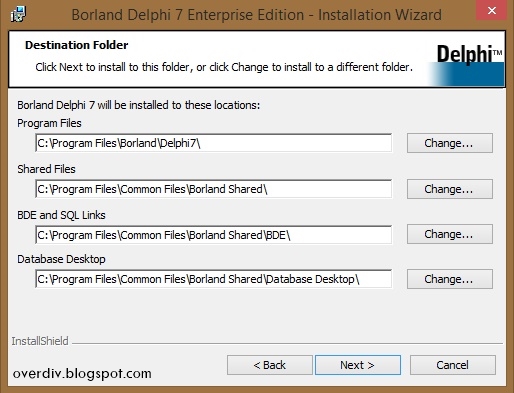Borland Database Desktop Windows 7
- Posted in:Admin
- 19/03/18
- 75
Refx Nexus Christmas Expansion Download Yahoo here. Dec 15, 2011 - 9 min - Uploaded by Mariana CostaAULA DIA.

The Windows desktop platform has long been the most popular platform among C++ application developers. With C++ and Visual Studio, you use Windows SDKs to target many versions of Windows ranging from Windows XP to Windows 10, which is well over a billion devices. Popular desktop applications like Microsoft Office, Adobe Creative Suite, and Google Chrome all are built using the same Win32 APIs that serve as the foundation for Windows desktop development. Developing for Windows desktop allows you to reach the highest number of users on any non-mobile development platform. In this post we will dive into the “Desktop development with C++” workload inside Visual Studio and go over the workflow used to develop a desktop app. For information on developing Universal Windows Platform apps,. • • • • • • • • Acquiring the tools After installing Visual Studio, open the Visual Studio Installer from the Start menu and navigate to the Workloads Page.
We need to install the “Desktop development with C++” workload, which provides the tools needed for developing Windows desktop applications that can run on Windows. The Win32 API model used in these types of applications is the development model used in Windows versions prior to the introduction of the modern Windows API that began with Windows 8. This modern API later evolved into the, but traditional desktop development using Windows APIs is still fully supported on all versions of Windows. When you install the C++ Windows desktop workload, you have many options to customize the installation by selecting your desired tools, Windows SDKs, and other additional features like recent ISO C++ standards candidates such modules support for the STL.
The core C++ compiler and libraries for building desktop applications that target x86 and x64 systems are included in the VC++ 2017 v141 toolset (x86, x64). Notable optional tools include support for MFC and C++/CLI development. In the following examples, we will show how to create an MFC app, so this optional component was installed.
Opening code and building After installing the C++ desktop workload, you can begin coding in existing projects or you can create new ones. Out of the box, Visual Studio can open any folder of code and be configured to build using CMake, a cross-platform build system. The Visual Studio CMake integration even allows you to use another compiler by opening the directory containing your CMakeLists.txt files and let VS do the rest. Of course,there is also full support for Microsoft’s own build system called, which uses the.vcxproj file format. MSBuild is a robust and fully featured build system that allows building projects in Visual Studio that target Windows.
Building an MSBuild-based project just requires a.vcxproj file and can be built in the IDE. In Visual Studio 2017, you can also simply open a folder of code files and immediately begin working in it.
In the background, Visual Studio will index your files and providing Intellisense support along with refactoring and all the other navigation aids that you expect. You can create custom.json scripts to specify build configurations. Creating new projects If you are creating a new project from scratch, then you can start with one of a variety of project templates.: Each template provides customizable build configurations and boilerplate code that compiles and runs out of the box: Project Type (folder) Description Win32 The (also known as the Windows API) is a C-based framework for creating GUI-based Windows desktop applications that have a message loop and react to Windows messages and commands. A Win32 console application has no GUI by default and runs in a console window from the command line. ATL The is a set of template-based C++ classes that let you create small, fast Component Object Model (COM) objects.